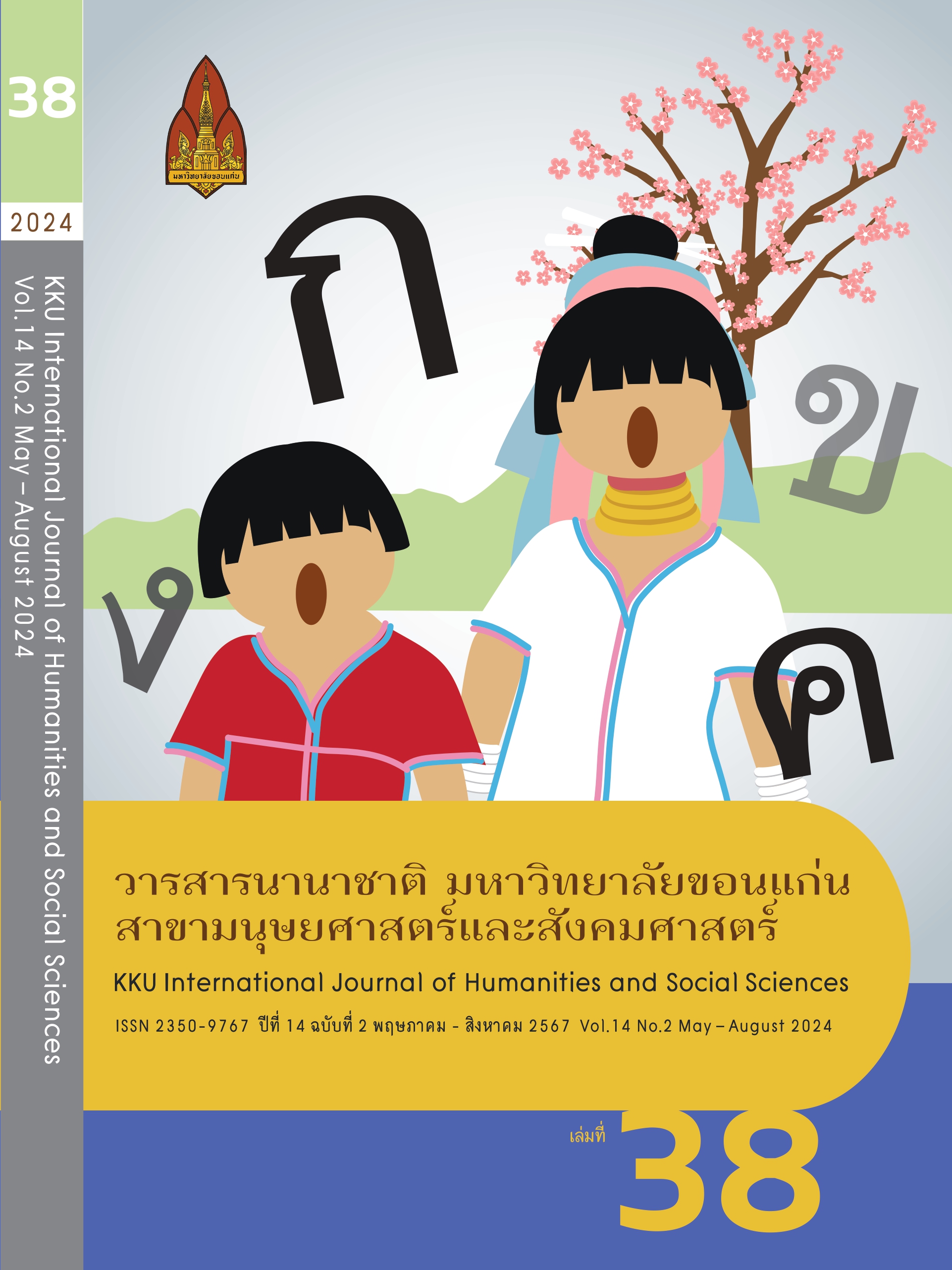Ecological Conscience: An Analysis of Children’s Literature on “ Jao Nu Phu Phithak Haeng Ko Libong” by Kitisak Srikaewboworn
Main Article Content
Abstract
This article aims to examine the concept of ecological conscience of Jao Nu Phu Phithak Haeng Ko Libong by Kitisak Srikaewboworn. It is a children’s literature that utilizing the theory of ecocriticism. The study's findings indicate that the novel embodies the concept of ecological conscience within two paradigms of human-nature relationships. 1) Holistic and Symbiotic Relationship with Nature: The narrative promotes a holistic view of the world and a friendly relationship with nature, portraying it as a refuge for survival. It emphasizes that nature provides nourishment, balances the ecosystem, serves as a space for healing and happiness, and offers a learning environment. The novel depicts humans as co-creators with nature, treating it with love and generosity, being aware of environmental problems, and actively participating in the protection and conservation of nature. Additionally, it instills environmental ethics through religious doctrines. 2) Anthropocentric and Exploitative Relationship with Nature: The novel also presents the perspective that humans dominate nature, particularly within the context of capitalism, where animals are commodified, hunted, and exploited. This paradigm highlights the limitless exploitation of natural resources and the human role in creating pollution.
The children’s literature; Jao Nu Phu Phithak Haeng Ko Libong is a nature conservation narrative aimed at fostering ecological conscience in youth. It advocates for a paradigm shift in the new generation, encouraging children to value nature, become aware of environmental issues, and adapt their lifestyles to align with and respect the natural world. This approach aims to promote peaceful and sustainable coexistence between humans and nature.
Article Details
References
กิติศักดิ์ ศรีแก้วบวร. (2565). เจ้าหนูผู้พิทักษ์แห่งเกาะลิบง. พิมพ์ครั้งที่ 2. นครศรีธรรมราช: ศรีนครอินเตอร์เทรด
ขวัญชนก นัยจรัญ. (2562). อุปลักษณ์สัตว์ในนวนิยายเรื่อง “คนในนิทาน” : สัตวศึกษาตามมุมมองวรรณกรรมวิจารณ์เชิงนิเวศ. วารสารมนุษยศาสตร์และสังคมศาสตร์, 11(3), 1-25
ดารินทร์ ประดิษฐทัศนีย์. (2559). พินิจปัญหาสิ่งแวดล้อมผ่านมุมมองวรรณกรรมอเมริกันร่วมสมัย. กรุงเทพฯ: จุฬาลงกรณ์มหาวิทยาลัย.
ตรีศิลป์ บุญขจร. (2559). การวิจารณ์วรรณกรรมแนวนิเวศ (Ecocriticism). สืบค้นเมื่อ 7 พฤศจิกายน 2566, จากhttps://www.youtube.com/watch?v=l-jQiq-ptPE&t=1340s
ธัญญา สังขพันธานนท์. (2556). วรรณคดีสีเขียว: วาทกรรมธรรมชาติและสิ่งแวดล้อม. กรุงเทพฯ: นาคร.
ธัญญา สังขพันธานนท์. (2560). แว่นวรรณคดีทฤษฎีร่วมสมัย. กรุงเทพฯ: นาคร.
ธัญญา สังขพันธานนท์. (2561). ใช่เพียงเดรัจฉาน : สัตวศึกษาในมุมมองของการวิจารณ์เชิงนิเวศ. สืบค้นเมื่อ 5 พฤศจิกายน 2566, จาก http://literary2499.blogspot.com
นงนภัส คู่วรัญญูเที่ยงกมล. (2554). สิ่งแวดล้อมและการพัฒนา. กรุงเทพฯ: จุฬาลงกรณ์มหาวิทยาลัย.
พชรวรรณ บุญพร้อมกุล. (2562). Ecocriticism นิเวศวิจารณ์: วรรณกรรม ธรรมชาติสิ่งแวดล้อม โลก. นววิถี วิธีวิทยาร่วมสมัยในการศึกษาวรรณกรรม. (หน้า373-437).
ยุพยง ทัศคร และ มารศรี สอทิพย์. (2560). สำนึกนิเวศลุ่มแม่น้ำโขง ในนวนิยายสายน้ำและชายชรา : เรื่องเล่าจากคอนผีหลง. วารสารมนุษยศาสตร์สังคมศาสตร์, 35(3), 9-113.
วรรณธิรา วิระวรรณ. (2562). แนวคิดเกี่ยวกับธรรมชาติในวรรณกรรมเยาวชนเรื่อง “บ้านชายทุ่ง”. วารสารมนุษยศาสตร์และสังคมศาสตร์, 11(1), 83-108
วรวุฒ โรมรัตนพันธ์. (2551). ทุนทางสังคม กระบวนทัศน์ใหม่ในการจัดการสิ่งแวดล้อม. กรุงเทพฯ: ฟิสิกส์เซ็นเตอร์.
วศินรัฐ นวลศิริ. (2562). รักษ์รู้ รักษ์โลก : การเรียนรู้สหวัฒนธรรมผ่านวรรณกรรมสิ่งแวดล้อมภาษาอังกฤษ. พิษณุโลก: โฟกัสมาสเตอร์พริ้นต์
วินัย วีระวัฒนานนท์. (2546). สิ่งแวดล้อมศึกษา. พิมพ์ครั้งที่ 3. กรุงเทพฯ: โอเดียนสโตร์.
แอลลัน ไวส์แมน (2564). เมื่อโลกไม่มีเรา (The World Without Us). (สรณรัชฎ์ กาญจนะวณิชย์, ผู้แปล). กรุงเทพฯ:ชอลท์ พับลิชชิ่ง.


